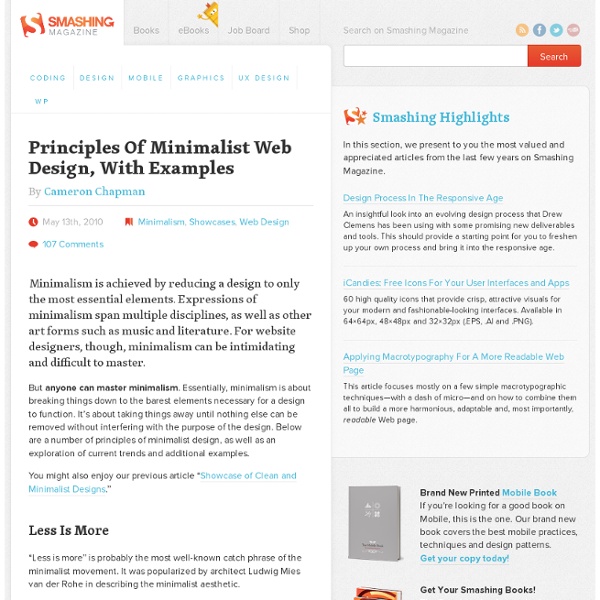Beautiful Typography in Web Design
Typography is a very important part of web design. By using different types of typography like big headlines and bold fonts web designers are improving the look and feel of websites. So in this post we have compiled some beautiful typography for your inspiration. kylemkramer wakwaw denisechandler moresoda eeharbor steedicons visualrepublic foreverheavy threepennyeditor inflicted adoreyou convergese losttype sasquatchfestival phase2technology openpublicapp collisionlabs blakeallendesign dotvita gerrenlamson rxbalance unitedpixelworkers wmcfest kylesteed hungarianwinesociety pineapplethief ipolecat woodinvillewhiskeyco amazeelabs abutler madebywater bottlerocketcreative rainypixels pieoneers
30+ Free Flash Photo Galleries and Tutorials | Graphics
(by Carlos) In this web roundup, we have handpicked some of the best free Flash photo galleries on the Internet. From web based scripts, to Flash components ready to be integrated on your website. And on top of that, we’ve also included some cool tutorials that will help you to learn how to create your own 2D and 3D Flash Galleries and how to turn it in a Flash Component. Full list after jump. FlashFlickr PhotoGallery A gallery from Sephiroth.it, based on Flex and Actionscript 3.0 that uses the famous Flickr API. Flashmo 3d Grid Flashmo is a well known free flash templates site, where you can find several cool interfaces like this 3D Grid gallery. PhotoDiary 1.0 PhotoDiary is a Flash based gallery, cool for people that don’t have flash skills or would like to have an application where easily could manage the photos on a normal php back end. Tony Photo Album FlashMo Stack Photo Gallery Another cool gallery from FlashMo. 3D Album Slideroll Gallery AV WS-Slideshow Imagin Flash Photo Gallery AutoViewer
View topic - Ecowatt Renewable Energy Consultants
The ''link'' looks like normal text, unless rollover better if you put Link here >> Looks OK, but i'm no fan. Firstly I don’t like the style, the way everything is low on quality, its bring the website down. 90% of the people use a mobile phone to browse the internet, make sure its friendly. The first page is the most important page of a website, never ever drag, i tend to find that a small section for what you do and what ur about, what u supply, and a list of prices, even if there base. Split it up into section, its better for the eyes, easy to navigate and deffo will attract more people. In-line documents, always make sure the page is inline with the rest, yours is not as its not flush with the banner, it looks total poo. Its abit low on quality, goods, and in your face, you don’t want a boring website nor do you want one that flashes like a fair ground but looks neat, smart and attracts.. The best bit I can say is the contact form, as there a big big must.
A guide to element display and positioning with the CSS Box Model-Rachel Appel on Software Development
Web developers tend to shy away from design & style and focus on the business logic, data structures, messaging, and systems development when dealing with web applications. Without a good grasp on positioning, which is often left to the designer, your websites can look very different between competing browsers, and downright ugly in some. Many native development platforms (XAML, Winforms, etc...) and tools implement the positioning of elements on screen as tables or grids. Tables also have been the de facto way to position DOM elements for a decade. Page layout with the Box Model and display attribute Browsers render Web page content using the Box Model, meaning that the display, position, margin, padding, and border attributes, combine to render each element as a box. Setting the display attribute affects the box model by determining whether or not elements render by their default display style or not - block or inline. Below is a compare and contrast of block and inline elements:
Make your navigation like Schiphol Airport – Clarity matters
Web writers, interaction designers and information architects can learn a lot from Amsterdam Schiphol Airport. Like the airport, our work depends on good user experience and helping people find their way. Many website navigations offer too many choices. As a result, people get lost. Paul Mijksenaar and his team designed the wayfinding (navigation) at Schiphol to address the needs of the stressed traveler. Each sign provides just enough information so the traveler can decide the next step in the journey. According to Mijksenaar, a user friendly navigation has a big impact on customer satisfaction and trust. You can do the same when you create the navigation of your next website.
Speckyboy Design Magazine | Web Design, Web Development and Graphic Design Resources
The Ingredients
Modern Comfort Food —



